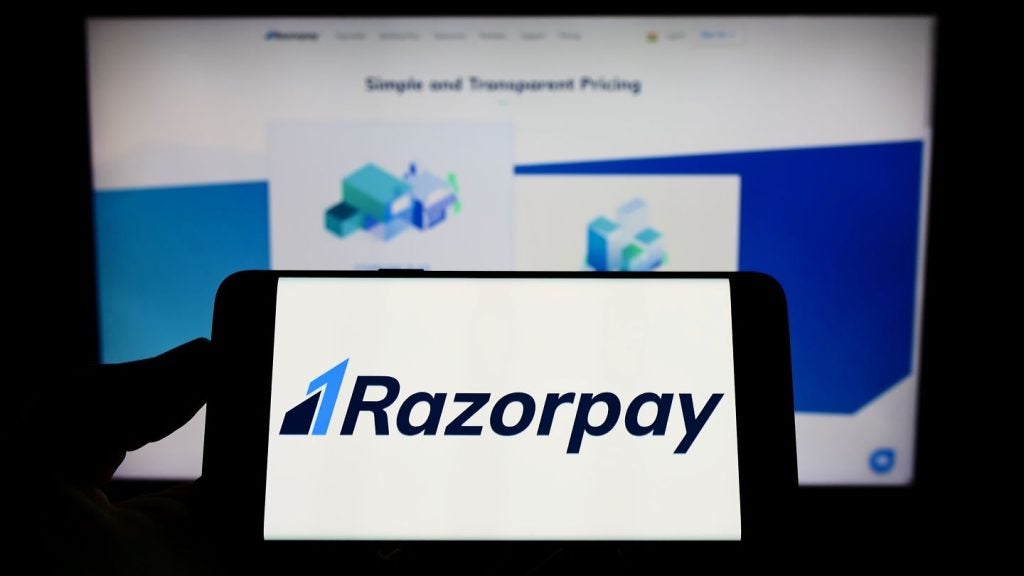The paper cheque – still regarded as a
staple of American deposit accounts and a linchpin of the retail
banking system – remains remarkably resilient in the face of an
ever-increasing array of alternatives, Charles Davis looks at the
current state of the cheque, and what is being done to speed its
demise
 Twenty-plus years ago
Twenty-plus years ago
bankers were predicting the imminent end of the cheque, yet it
remains, somewhat diminished by card-based alternatives but
suddenly breathing new life thanks to technological adaptation of
its own. The cheque, it seems, is evolving.
The cheque once ruled the US payments market.
At its peak in the mid-1990s, hundreds of millions of cheques
annually coursed through the nation’s banking system. From 1979
through 1995, annual cheque volume increased from 32 billion to
49.6 billion items.
Today, there are more than 109 billion noncash
payments transactions completed every year in the US. Based on
research published by the Federal Reserve System in 2004, the share
of those transactions completed by cheque declined from 57 percent
to 45 percent between 2000 and 2003 alone.
Since 2003, paper cheques collected by the
Federal Reserve Banks have declined by 11 to 12 percent per year,
with a 15 percent decline so far in 2011. A Federal Reserve study
released in April found that electronic payments continue to gain
relative to cash or cheque transactions.

US Tariffs are shifting - will you react or anticipate?
Don’t let policy changes catch you off guard. Stay proactive with real-time data and expert analysis.
By GlobalDataElectronic payments (those made with cards and
by ACH) now collectively exceed three quarters of all noncash
payments while payments by cheque are now less than one-quarter,
the Fed said.
The rates of decline in cheques written and
cheques paid during this period were both greater than during the
previous three-year period (2003-2006). Though starting from a
smaller base, payments made with prepaid cards (which include
private label, general purpose, and EBT cards) increased at the
fastest rate (21.5 percent per year), reaching a total of 6 billion
transactions in 2009.
George Throckmorton, managing director of
Advanced Payment Solutions for NACHA said that the cheque is going
away, yet stubborn pockets of resistance remain, particularly among
small businesses.
“We’re making steady progress, and to look at
how many cheques are moving into electronic categories in the
coming year, we’re really getting down to small business and some
consumer-to-consumer payments as significant opportunities,”
Throckmorton said. “Small business is just waiting on the right
tool to emerge.”
Pressure from
merchants
 All of these
All of these
cheques have to go somewhere, after all, adding cost and hassle to
smaller merchants’ already crowded work lives. But the volume is
not shifting to credit cards. Aggregate credit card payments, on
the other hand, exhibited the first observed decline (-0.2 percent
per year) of any instrument besides the cheque since the Federal
Reserve Payments Study began in 2000. Whether through debit cards,
prepaid or alternative payment schemes, cheques are in the midst of
steep decline.
Still, cheques remain a part of the payments
landscape. While electronic payments overtook cheques in the United
States by 2003, the value of cheques continues to far exceed the
value of commonly used electronic payments, suggesting that
big-ticket items still have Americans reaching for the chequebook.
There also remain many smaller mom-and-pop merchants, fundraising
organisations and person-to-person payments and related
transactions only accepting cash and cheques in the United States,
and that will remain the case for years to come.
Rather than force US consumers to abandon
cheques through account restrictions or fees, a host of
technological solutions have emerged to allow merchants to accept
cheques while minimizing the cost of handling them.
Over the past several years, some retailers –
notably Wal-Mart Stores – have adopted electronic cheque conversion
at the point of sale with the use of readers that capture MICR
(magnetic ink character recognition) information from a cheque and
transmit it to the Automated Clearing House (ACH) network. Paper
cheques are returned to the customer at the POS, and the customer
must sign a receipt. Cheque conversion offers faster clearing,
lower return fees and inexpensive ACH transactions – less than five
cents per transaction.
The bulk of cheque volume remains concentrated
among older consumers and tens of thousands of smaller businesses.
While channels for electronic payments have grown more
sophisticated in the past few years, with the ACH network and wire
transfers offering rails for larger companies’ B2B payments,
analysts say thousands of smaller businesses are sticking with
paper cheques for commercial payments.
Business under pressure
No single electronic-payment vehicle currently
provides the average small business with an adequate balance of
convenience, lower cost, payment-information capabilities and
acceptance compelling enough to drive down B2B cheque use.
In 2010, companies with less than $10 million
in annual sales accounted for 65 percent of all payments, according
to NACHA, the electronic-payment association that manages the US
ACH network. Though B2B payments overall are slowly shifting to
electronic channels, NACHA finds that conversion is slow among
smaller businesses.
Large corporations manage ACH payments through
sophisticated electronic data interchange formats, which enable
their mainframe computers to log and reconcile ACH payments
automatically. But smaller businesses typically lack such
resources. Among larger firms, commercial credit cards are playing
a key role in shifting payments from cheques.
Financial institutions and the card networks
long have favored small businesses shifting cash and cheque
payments to commercial cards, as these generate greater income to
issuers and associations.
But recipients pay much more for B2B card
payments than they do to accept cheques. For example, for a $50,000
cheque transaction, both the buyer and the seller pay between 25
cents and 50 cents to initiate and accept the payment, but for a
card payment of the same amount, the buyer pays nothing. The seller
could pay $1,000 or more in interchange and other fees.
Alternatives emerging
Electronic-payment alternatives, including the
ACH system, remain costly and complicated. But the paper-cheque
logjam could crumble in the next few years if initiatives succeed
in making ACH-payment data more manageable for small
businesses.
Though still in the nascent stages of
adoption, some new online-payment services designed to drive
transaction volume over the automated clearinghouse network are
starting to have an effect on cheque holdouts.
The number of ACH transactions conducted in
2010 rose 3.4 percent, to 19.4 billion, NACHA reported in April.
That compares with a 2.6 percent increase in volume in 2009. The
dollar volume that was moved over the network last year was $31.7
trillion.
Programmes such as Secure Vault Payments, the
Electronic Billing Information Delivery Service and other
initiatives by NACHA could continue mitigating declines in
transaction categories that once were major contributors to growth,
including cheque conversion. The Electronic Billing Information
Delivery Service, which is commercially available after a multiyear
pilot, enables companies, such as utilities and carriers, to send
bills directly to their customers’ bank websites over the ACH
network. Consumers receive the bills as a message on their bank’s
website.
The proliferation of mobile-payment services,
including those that allow a consumer to make purchases and
schedule payments on a mobile device and those that use the device
as a card replacement, could also be a boon for the network.
NACHA’s members in May 2010 approved a rule
expanding the definition of the WEB transaction category, which
pertains to consumer payments authorised over the Internet, to
include debits initiated over a wireless network.
NACHA also is working to ensure that B2B
payments carry the same amount of data as paper cheques. NACHA’s
corporate trade exchange, or CTX, category allows a business to
send up to 800,000 characters of information with a payment.
Transactions initiated with the transaction code in 2010 rose 11.1
percent, to 67.03 million.
In the next three years, businesses,
government entities and non-profit organizations plan to double
their use of paperless payment technologies, according to a survey
of accounts payable professionals recently released by US Bank,
International Accounts Payable Professionals and the business
research firm APQC.
The study predicts that paper cheques will
shrink from more than 60 percent of a typical organization’s
payments to less than 31 percent.
Nearly 65 percent of those surveyed reported
reduced paper cheque usage in 2010 compared to the year before. For
organizations exceeding $5 billion in revenue, it’s even more
pronounced – three out of four report declining paper cheque
use.
“While the survey indicates e-payment is
growing across the board, the larger the organization, the more
likely it is to be happening,” said Kurt Adams, senior vice
president of strategy and programme management for US Bank
Corporate Payment Systems. “With manual paper cheques contributing
to the challenges many accounts payable departments face, it’s no
surprise that organizations are looking toward electronic payments
to address their pain points.”
Decline inevitable
The trend is only going to accelerate,
according to the survey’s projections. Respondents said they plan
to nearly double the use of purchasing cards, ACH and electronic
funds transfer in the next three years. Paper cheques could
constitute less than 31 percent of payments by 2014. Again, the
largest organisations are moving the fastest: they anticipate only
13 percent paper payment by that time.
“Electronic payments have emerged as an
alternative means of conducting business, offering numerous
tangible benefits for buyers and sellers alike,” said Mark
Brousseau, vice president of research and business development for
IAPP-IARP-TAWPI. “The universal migration to e-payment makes
perfect sense, as does the projection of greater momentum over the
next three years, given the increasing pressure companies face to
reduce costs and improve agility.”
US federal agencies are among the nation’s
largest cheque users, but they too are moving to electronic
payments and prepaid cards. The migration of Social Security
payments from cheques to electronic deposit will represent the
largest-ever electronic payments shift, as the Treasury Department
has announced plans to move 11 million people from cheques to ACH
deposits by 2013.
The shift to electronic payments will save the
federal government about $1 billion over the next 10 years. More
than 18 million baby boomers are expected to reach retirement age
during the next five years, with 10,000 people a day becoming
eligible for Social Security benefits. Currently, 628,000 Social
Security or SSI paper cheque payments are issued to federal benefit
recipients each month.
The savings are compelling: it costs 92 cents
more to issue a payment by paper cheque than by direct deposit.
About eight in 10 federal benefit recipients already receive
payments electronically, which makes the numbers all the more
eye-popping.
For banks looking to minimise cheque handling,
remote deposit capture represents another rapidly growing
technological alternative to dealing with all that paper.
Mobile remote deposit capture enables
financial institutions to drive cheque-bearing customers to
self-service channels and away from more costly branch services.
Thus far, only a small handful of banks are actually live with a
mobile remote deposit feature, including USAA Federal Savings Bank,
JPMorgan Chase & Co. and State Farm Bank.
Those numbers are expected to grow this year,
as several large vendors, including Fiserv, Jack Henry &
Associates and Fidelity National Information Services, agreed to
offer mobile remote deposit capture to their bank and credit union
customers using patented imaging technology from Mitek Systems,
whose software has been largely responsible for spreading the
service.
“We’re right on the edge of a huge change, as
even the smallest merchants can gain access to tools that help them
reduce or eliminate cheques,” said NACHA’s Throckmorton. “All these
clients have needed is a compelling business model for
electronification and the same richness of data they had been
enjoying on the paper side, and it is emerging.”








